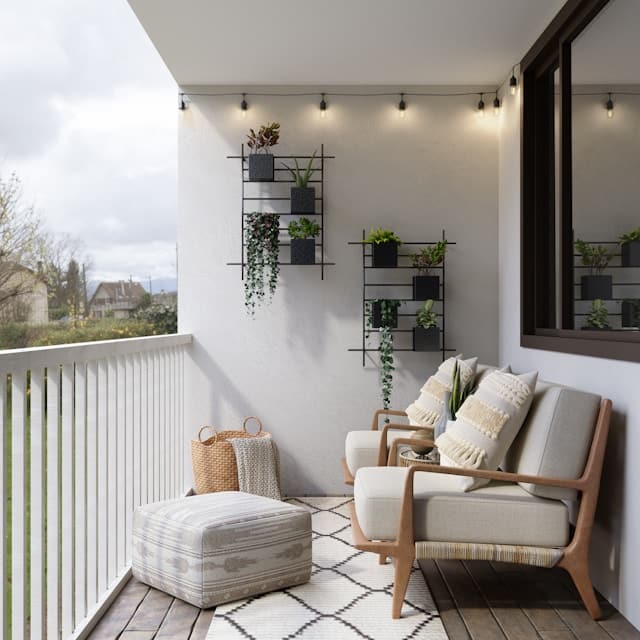In the fascinating world of indoor aquariums and fish keeping, nothing quite matches the mesmerizing beauty of an indoor koi pond. With the colorful and vivacious koi fish playfully darting in and out of the shadows, a well-maintained koi pond can transform your indoor living space into a tranquil oasis. Yet, the responsibility of maintaining such a miniature ecosystem can seem overwhelming, especially to newcomers. Fear not, because with the right knowledge and tools, caring for an indoor koi pond will be a rewarding endeavor rather than a burdensome chore.
Selecting the Right Equipment
Before we dive into the steps to clean and maintain your indoor koi pond, it’s essential to understand the importance of selecting the right equipment. This means investing in a high-quality filter, a reliable pump, a suitable tank, and, in certain cases, specific indoor plants that will keep the water oxygenated and healthy for your koi fish.
A lire aussi : What’s the best way to soundproof a children’s playroom to avoid disturbing neighbors?
A properly functioning filter plays a crucial role in keeping the water clean by removing waste products and maintaining the right balance of beneficial bacteria. Choosing the right pump is equally important as it circulates the water and helps oxygenate it for the fish. The size of the tank or pond should be appropriate for the number and size of koi fish. Overcrowding will lead to increased debris and waste, causing potential water quality issues.
Incorporating plants into your pond design not only adds aesthetic value but also helps to maintain water’s cleanliness. Plants can absorb excess nutrients, provide shade, reduce algae growth and even serve as a supplemental food source for your koi.
Dans le meme genre : How can you create a cozy reading area under the stairs?
Regular Water Checks and Maintenance
Ensuring water quality in your indoor koi pond is vital for the health of your fish. Regular water checks will aid in maintaining the right balance of pH, ammonia, nitrite, and nitrate levels. You need to perform these checks at least once a month, but initially, especially with new ponds, it might be necessary to do it more frequently.
Water changes should also be part of your regular maintenance routine. Changing about 10-20% of the pond water weekly will dilute harmful chemicals and replenish essential minerals. Additionally, it’s crucial to keep the water temperature stable, since sudden fluctuations can stress your koi fish.
Keeping the Pond Clean
Indoor ponds, unlike outdoor ones, don’t benefit from natural cleaning processes like rain or beneficial wildlife. Consequently, cleaning is an essential task in your maintenance routine. Vacuuming the bottom of the tank regularly will help remove debris and uneaten food that can lower water quality and cause harmful build-ups. An aquarium siphon is a useful tool for this job.
Algae growth is another common issue in indoor ponds. Although a certain amount of algae is beneficial, excessive growth can be problematic, depleting oxygen levels and impairing water quality. Regular removal of visible algae, coupled with measures to control light exposure and nutrient levels, can help keep it in check.
Caring for Your Koi Fish
Your koi fish are the crown jewels of your indoor pond, so their care should always be a priority. An essential aspect of koi care is feeding them a balanced diet and avoiding overfeeding which can lead to water contamination.
Observing your fish daily is also vital. Changes in behavior, color, or appetite can signal potential health problems that need immediate attention. If you notice any unusual signs, it’s best to consult with a professional or experienced koi keeper.
Incorporating Plants for a Healthy Ecosystem
Plants play an essential role in maintaining a healthy indoor koi pond. Besides oxygenating the water and absorbing excess nutrients, they also provide cover for koi fish, reducing their stress levels. Choosing the right plants for your pond will depend on factors like the size of the pond, the number and size of the fish, and the amount of light the pond receives.
Some popular pond plant choices include water lilies, hornwort, and anacharis. These plants are not only beautiful but also hardy and beneficial for your koi pond. However, keep in mind that koi are known for uprooting plants, so you’ll need to protect the plant roots with rocks or plant containers.
Maintaining an indoor koi pond may seem like a daunting task, but with the right equipment, regular maintenance and a bit of dedication, you’ll be rewarded with a vibrant, thriving ecosystem right in your living room. So, put on your caretaker’s hat and enjoy the serene, rewarding experience that comes with keeping an indoor koi pond.
Acclimating Your Koi to the Indoor Pond
Before introducing your koi fish into their new indoor pond, it’s vital to properly acclimate them to prevent shock from sudden changes in water temperature or chemistry. This can be a stressful process for the fish, but with careful planning and execution, it can be carried out smoothly.
To start, float the bag in which the koi were transported on the surface of the pond for about 15 to 30 minutes. This allows the water in the bag and the pond to equalize in temperature, reducing the risk of thermal shock. Next, gradually mix some pond water into the bag over the next 10 to 20 minutes to let your koi slowly adjust to the pond’s water chemistry.
Once acclimated, gently release your koi into their new home, ensuring minimum stress. Monitoring their behavior closely for the first few days will help detect any potential issues early on.
This process of acclimatization can vary depending on factors like the fish’s size, the temperature difference between transport water and pond water, and the sensitivity of the particular koi species. Always ensure to undertake this process patiently and carefully to ensure the well-being of your koi.
The Significance of Proper Lighting for Indoor Koi Ponds
Lighting plays a crucial role in maintaining a healthy indoor koi pond. It’s not just for aesthetics or to make your vibrant koi more visible; it also significantly impacts the pond’s ecosystem. Lighting affects the growth of aquatic plants, the behaviors of the koi, and the overall health of the pond.
For indoor koi ponds, it’s essential to have a good source of artificial light to compensate for the lack of natural sunlight. Consider using full-spectrum lights, which are designed to mimic natural sunlight and can support plant growth. It also helps bring out the vibrant colors of your koi, adding more beauty to your pond.
Be mindful, though, of the duration of light exposure. Excessive light can lead to rampant algae growth, while insufficient light can stunt plant growth and negatively affect your koi’s health and behavior. A good rule of thumb is to keep the light on for about 10-12 hours a day.
Remember, lighting is a critical aspect of indoor koi pond maintenance. With the right balance of light, your indoor pond will flourish, providing an ideal environment for your koi and a beautiful, calming presence in your home.
Conclusion: Embrace the Joy of Indoor Koi Keeping
Keeping an indoor koi pond is an enriching hobby that adds a touch of tranquility to your living space. While it does require commitment, the rewards are immeasurable. From the meditative beauty of watching your koi swim gracefully to the satisfaction of maintaining a balanced ecosystem, the task of caring for a koi pond offers endless enjoyment.
Equipped with the right knowledge about equipment selection, regular water checks and maintenance, pond cleaning, caring for your koi, and incorporating appropriate plants, you can ensure a healthy and vibrant habitat for your koi fish. Remember to acclimate your koi carefully and pay attention to your pond’s lighting conditions too.
Take delight in the blossoming relationship between you and your koi. Embrace the challenges and triumphs of koi keeping with an open heart and a willing spirit. With time, you’ll find yourself not just a koi keeper, but a koi enthusiast, passionate about this rewarding endeavor.
Maintaining an indoor koi pond may have its challenges, but the joy and serenity it brings make it all worthwhile. So, dive into the world of koi keeping, and let your indoor koi pond be the oasis of peace in your home. Happy koi keeping!






